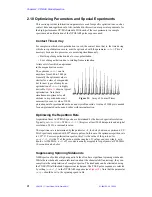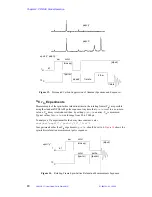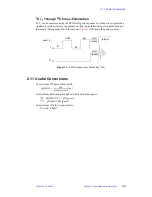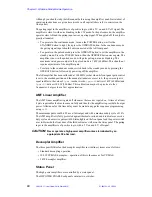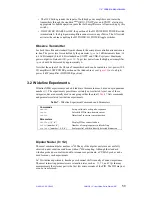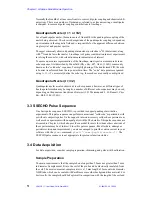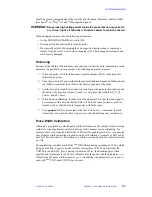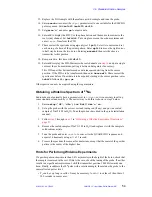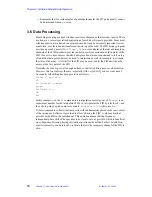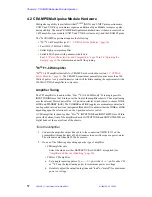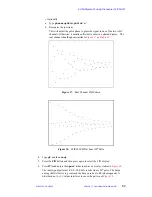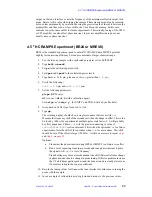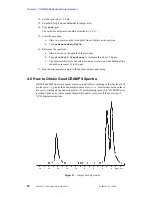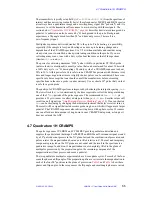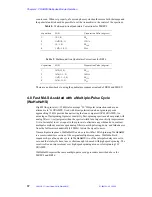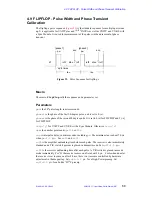
3.5 Standard Wideline Samples
01-999162-00 C0402
VNMR 6.1C User Guide: Solid-State NMR
54
13. Replace the D
2
O sample with the malonic acid–d
4
sample and tune the probe.
14. Enter
ssecho
to convert the
s2pul
parameter set to one suitable for the SSECHO
pulse sequence. Set
tau1=20
tau2=15
nt=16
.
15. Set
gain='n'
and enter
go
to acquire data.
16. Enter
df
to display the FID. Use the phase button and the mouse to maximize the
real (cyan) channel. Set
lsfid=0
. Put a single cursor on the echo maximum and
enter
tmove
. Transform the FID.
17. Phase correct the spectrum using
rp
only (set
lp=0
). Select two cursors and set
each on top of a horn of the powder pattern. Enter
split
to move the right cursor
to half way between the two horns. Entering
movetof
then sets the observe
transmitter to this position.
18. Reacquire data, this time with
d1=10
.
19. Enter
df
to isplay the FID. Maximize the real channel as in
and put a single
cursor at the echo maximum, putting it between data points if necessary.
This FID can either be transformed or data reacquired starting from the cursor
position. If the FID is to be transformed, then enter
tmove
wft
. Phase correct the
spectrum as before. If new data is to be acquired starting at the cursor position, enter
tshift
followed by
go
or
ga
.
Other spectra can now be acquired using these parameters.
Obtaining a Wideline Spectrum of
23
Na
Sodium does not normally have a parameter set in
stdpar
, so it is necessary to call up
some standard set and modify it. The easiest way to do this is shown in step 1 below.
1.
Enter
setup('H2','d2o')
tn='Na23'
dm='n'
su
.
2.
Set up the probe with the correct coil and tuning rod (if any) and put in a sealed
sample of NaCl (1 M in H
2
O). Tune the probe as described in the probe installation
manual.
3.
through
“Obtaining a Wideline Spectrum of Deuterium,”
4.
Remove the sealed sample of NaCl (1 M in H
2
O) and replace it with the sample to
solid sodium nitrate.
5.
Tune the probe and enter
ssecho
to convert to the QUADECHO sequence and
acquire 16 transients using a
d1
of 1 second.
6.
Process the spectrum the same as for deuterium, except that the center of the powder
pattern is the center of the highest line.
Hints for Performing Wideline Experiments
If a powder pattern shows more than 3-4% asymmetry in the height of the horns, check that
the sample is centered in the coil. If this is the case, check the tuning of the probe. If neither
results in a significant improvement, shift the transmitter position 1000 Hz towards one
horn. Finally, recalibrate the 90
°
pulse with a solution sample, then retune the probe to the
same reflected power level.
• T
1
can be very long in solids. It may be necessary to set
d1
to values of the order of
100 seconds in some cases.


